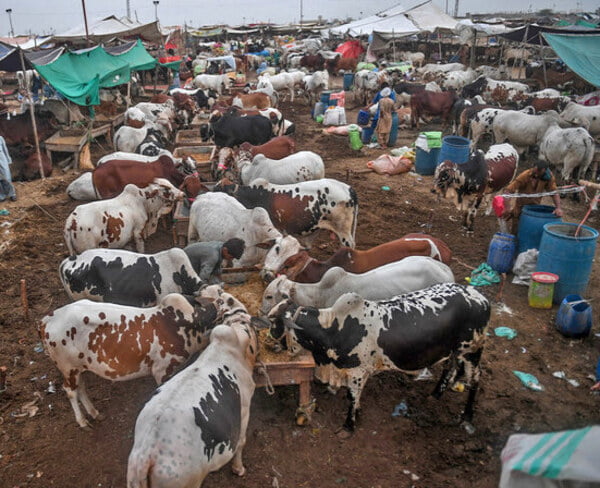The Punjab government has decided not to charge any fee at the sale points of sacrificial animals, Chief Minister Maryam Nawaz Sharif directed to ensure zero waste on Bakra Eid.
Animal sale points will be established on the basis of “No Profit No Loss”, 10 days before and 3 days after Eid-ul-Azha, leave of municipal employees will be banned, eco-friendly bags will be provided free of cost to every house of Qurbani in cities.
Cattle Markets Price in Pakistan Today
The main cattle set up in the city takes the form of a fair where a large number of citizens not only come to buy their sacrificial animals but also to see the beautiful animals brought for sale in VIP blocks.
Temporary stalls to provide food courts and other basic items in the limits of the cattle market. Booths and ATMs of big banks will also be set up like every year to secure money, while ambulances will also be available 24 hours a day with emergency medical assistance facility for any kind of emergency situation.
The cattle market, which provides a safe and convenient environment for citizens to buy sacrificial animals, is an important source of development for Pakistan’s economy, especially the livestock sector, where thousands of traders from all over the country bring millions of sacrificial animals and sell them.
The cattle market also includes free supply of 30 liters of water per animal as well as free supply of land for sacrificial animals brought for sale.
It has been made mandatory to inspect all cattle before entering the market, while a certificate from the veterinary department has also been made mandatory to verify the health of the cattle.
| City | Type of Cattle | Price per Kilogram (PKR) |
|---|---|---|
| Karachi | Cow | 1,500-2,000 |
| Lahore | Buffalo | 2,000-2,500 |
| Islamabad | Goat | 1,000-1,500 |
| Peshawar | Sheep | 800-1,000 |
Farmers also relocate to big cities in search of greater financial gain because livestock are sold at higher prices in big cities than in small cities. In addition, large dealers occasionally purchase more animals from small towns at low costs and then sell them at high prices in large marketplaces.
When comparing current prices to historical ones, it can be seen that there has been no discernible decline in the number of animals.
 AWAM PK – Current Jobs & News for Awam of Pakistan AWAM PK Latest News, Results, Jobs, Sports, images, All Prices in Pakistan
AWAM PK – Current Jobs & News for Awam of Pakistan AWAM PK Latest News, Results, Jobs, Sports, images, All Prices in Pakistan



